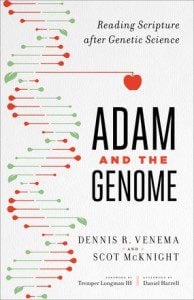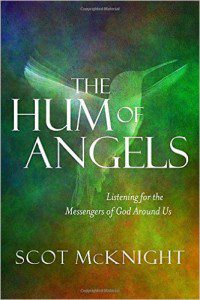Jenn LeBow, gospel-shaped “submission”: “Dennis and I, a little more than fifteen years into our marriage, have disavowed extremes in many contexts: politics, religion, parenting. But one extreme we do cling to: we still treat each other more kindly than we treat anyone else. Some days, doing so requires more submission than any other task, but it’s always been a mutual submission for us. I see clearly how much patience it takes for Dennis to remain kind with me; my efforts with him don’t require nearly as much strength of will. Nevertheless, we believe it to be among the top three reasons our marriage remains strong.”
Zack Hunt is right: “It simply makes no sense when church leaders begin a conversation (which is the purpose of tweets, Facebook statuses, blog posts, etc.), for other Christians to respond to that conversation somewhere else. I don’t mean the conversation shouldn’t also continue offline. I mean the idea that seems to pop up whenever celebrity preachers like Mark Driscoll or John Piper or whoever say something outrageous, namely that Twitter, Facebook, or blogs are the wrong place to engage the conversation that started in those very same places, is utterly absurd. The world has changed. The internet is the new public square.”
Ed Moore, on sacred bundles… a post for all of us: “The pastor had insulted one of the principal relics in Granny Smith UMC’s “sacred bundle.” A sacred bundle is the collection of symbols, stories and artifacts that confers identity upon a community and establishes its social norms; every organization has one. The longer the organization has existed, the more layered and complex its sacred bundle is likely to be.” (HT: MR)
Rachel Held Evans and the scandal of the heart: “This is true to an extent. I’ve wrestled with a lot of questions related to science and faith, especially given my location a mere two miles from the famous Rhea County Courthouse where John Scopes was prosecuted for teaching evolution in a public school. While I no longer believe the earth is just 6,000 years old, I still live in the tension of unanswered questions about the universe, and death, and brains, and Neanderthals, and whatever Neil deGrasse Tyson’s got to say on public television about the earth getting burned up by the sun or our species going extinct after an asteroid hits. I have questions too about history and Christianity’s emergence from it, questions about the Bible, questions about miracles. But the questions that have weighed most heavily on me these past ten years have been questions not of the mind but of the heart, questions of conscience and empathy. It was not the so-called “scandal of the evangelical mind” that rocked my faith; it was the scandal of the evangelical heart.” [Of course, the reason Mark Noll wrote about the scandal of the evangelical mind was because there was too much heart and passion and not enough mind.]
Charity Jill Erickson and the cake-eaters along 494 — at CPC!
Te’o and Catfishing: “When the show’s producers finally bring them together, Abigail turns out to be not willowy, blonde and Barbie Doll-cute. In fact, she is dark-haired, obese and deeply troubled, and her real name is Melissa. Explaining her deception to an obviously dejected Jarrod, she says she knew that if she showed herself as she really looked, she would never have attracted any man’s interest—her experience of rejection throughout her school years and young adulthood had demonstrated that. “Pretty much all of it was, you know, me—just not me,” she said. “Everything, all the emotions, you know—just a different face, I suppose.” Those words were kind of an eerie echo of Swarbrick’s description of Te’o. “Every single thing about this…was real to Manti,” Swarbrick said. “There was no suspicion that it wasn’t, no belief that it might not be. And so the pain was real. The grief was real. The affection was real. And that’s the nature of this sad, cruel game.” All this assumes, of course, that Te’o truly was a victim, and was not involved in creating the hoax of his “girlfriend.” The point is that it is not implausible to believe that he was a victim. The point is that this kind of hoax has been perpetrated many times already in the Internet age, sometimes with tragic consequences.” (HT: OY)
Michael Jensen, at Sydney Anglicans, observing a seeming consensus on women teaching: “Nevertheless, what is interesting to me is that there seems to be emerging an agreement from all sides in this discussion that the New Testament features women in speaking roles in front of mixed congregations to a far greater extent than is often now practiced in Sydney Anglican churches. Some of the implementation of complementarian thinking about ministry has been over-zealous, to the point that it ignores what is plainly the case in the Bible. In 1 Corinthians 11 (to take the obvious example) women prophesy in the church gathering, and there is no forbidding them from doing so. Why do we not see this more often in our church meetings? My colleague Jane Tooher from the Priscilla and Aquila Centre has been advocating and modeling this practice in the last couple of years.”
Akira Okrentand the Oxford Comma War: “The Oxford comma, so-called because the Oxford University Press style guidelines require it, is the comma before the conjunction at the end of a list. If your preferred style is to omit the second comma in “red, white, and blue,” you are aligned with the anti-Oxford comma faction. The pro-Oxford comma faction is more vocal and numerous in the US, while in the UK, anti-Oxford comma reigns. (Oxford University is an outsider, style-wise, in its own land.) In the US, book and magazine publishers are generally pro, while newspapers are anti, but both styles can be found in both media. The two main rationales for choosing one style over the other are clarity and economy. Each side has invoked both rationales in its favor. Here are some quotes that have served as shots exchanged in the Oxford comma wars.”
Dave Moore and Moore Engaging.
Mental Floss has some facts about coffee. “In 1674, the “Women’s Petition Against Coffee” said it was turning British men into “useless corpses” and proposed a ban for those under 60″ and “In 1932, Brazil couldn’t afford to send its athletes to the Olympics in Los Angeles. So they loaded their ship with coffee and sold it along the way.”
Frank Viola has a “spiritual conversation style” map: charismatic, quoter and pragmatic styles.
Ecclesia and Ethics, an online webinar/conference with such folks as Michael Gorman, Mariam Kamell, N.T. Wright, and Shane Claiborne.
Meanderings in the News
Father Flannery doesn’t sound like a Catholic priest to me: “In the article, Father Flannery, a Redemptorist priest, wrote that he no longer believed that “the priesthood as we currently have it in the church originated with Jesus” or that he designated “a special group of his followers as priests.” Instead, he wrote, “It is more likely that some time after Jesus, a select and privileged group within the community who had abrogated power and authority to themselves, interpreted the occasion of the Last Supper in a manner that suited their own agenda.” Nor does Tom Brodie.
 Worst picture of the Inaugural Day events — a door on our President’s car door so thick…
Worst picture of the Inaugural Day events — a door on our President’s car door so thick…
Ken Jennings: “In China, for example, it’s widely believed that sitting on a seat recently warmed by someone else’s behind can give you hemorrhoids. The Brits, on the other hand, attribute hemorrhoids to sitting on cold surfaces. But sitting on that same cold concrete would lead to a different lecture from a Ukrainian mom: She’d be sure it would make you sterile. Some Peruvians are told that lingering too long in front of the fridge can cause cancer. In the Czech Republic, everyone knows that drinking water after eating fruit leads to painful bloating. Filipino kids can’t wear red when it’s stormy out, since that would attract lightning. Germans and Austrians live in mortal fear of drafts, which get blamed for everything from pneumonia to blocked arteries, so summertime commuters routinely swelter on 90-degree trains and buses rather than cracking a window through which a cooling—but lethal!—breeze might pass. In South Korea, however, the concern about ventilation is exactly the opposite. Koreans will only use electric fans if a window is cracked, because leaving a fan on in an enclosed room, it’s almost universally believed, can be fatal. The mechanism behind the threat is a little vague: Sometimes it’s said to be a lack of oxygen that kills you, sometimes it’s a chill. But either way, you won’t care. You’ll be dead.”
Mari-Jane Williams on what high schoolers need to know upon graduation.
Ireland and rural drinking and driving.
Can we bring back the Neanderthals? “SPIEGEL: Setting aside all ethical doubts, do you believe it is technically possible to reproduce the Neanderthal? Church: The first thing you have to do is to sequence the Neanderthal genome, and that has actually been done. The next step would be to chop this genome up into, say, 10,000 chunks and then synthesize these. Finally, you would introduce these chunks into a human stem cell. If we do that often enough, then we would generate a stem cell line that would get closer and closer to the corresponding sequence of the Neanderthal. We developed the semi-automated procedure required to do that in my lab. Finally, we assemble all the chunks in a human stem cell, which would enable you to finally create a Neanderthal clone. SPIEGEL: And the surrogates would be human, right? In your book you write that an “extremely adventurous female human” could serve as the surrogate mother. Church: Yes. However, the prerequisite would, of course, be that human cloning is acceptable to society. SPIEGEL: Could you also stop the procedure halfway through and build a 50-percent Neanderthal using this technology. Church: You could and you might. It could even be that you want just a few mutations from the Neanderthal genome. Suppose you were too realize: Wow, these five mutations might change the neuronal pathways, the skull size, a few key things. They could give us what we want in terms of neural diversity. I doubt that we are going to particularly care about their facial morphology, though (laughs).”
NPR and the Common Core reading curriculum.
Josh Wingrove sketches Oprah’s preparation and experience with the interview of Lance Armstrong: “Before Lance Armstrong arrived, Oprah Winfrey cleared the room, meditated and prayed. She didn’t want to pass judgment on the man soon to be before her, a 41-year-old fallen cycling legend about to deliver a staggering mea culpa. It didn’t matter if he was guilty, if he’d lied or if he’d leveraged it all to build a global brand. Ms. Winfrey had, instead, learned her lesson with James Frey, the disgraced author whose tailspin engulfed her book club.”
Meanderings in Sports
On the Cubs convention: “During a question-and-answer session with the Ricketts family, one elderly fan criticized the Cubs for having players with long hair, adding the “manager who is on TV every day looks like he slept on a park bench.” As the audience howled, Tom Ricketts replied: “I’ll put that one in the suggestion box.”












